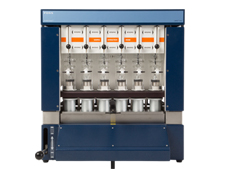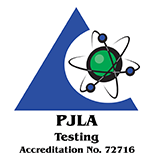Extraction is used to isolate soluble matter such as crude fat, additives, pesticides and critical minor constituents from complex materials. Extraction analysis is traditionally based on the Soxhlet principle because of its world-wide accepted accuracy and reproducibility.
However, conventional Soxhlet analysis involves tedious and time consuming manual work and explosion risks.
The patent design of the Soxtec System makes it possible to perform extractions using a wide range of solvents, in a quicker, safter and more economical way compared to Soxhlet extractions. Thus, the technique reduces extraction time to less than 20% of Soxhlet times and recovers 60-70% of the solvent, while maintaining the same accuracy and reproducibility as traditional Soxhlet.
High safety is ensured by a spark proof hot plate.
The combination of the Soxtec extraction technique and the wide range solvent use makes the Soxtec System a flexible and powerful tool in the analysis of soluble compounds from materials such as food, feed, soil, fibers, chemical technical products and pharmaceuticals.
Samples to be analyzed are homogenized and subsequently weighed into thimbles, dried at an appropriate temperature for an appropriate amount of time according to the sample matrix, and then inserted into the Extraction Unit for crude fat extraction. Solvent is added to the extraction cups. For total fat determination, the sample is hydrolyzed in acid. Hydrolysis makes chemically or mechanically bound fats accessible to solvent extraction. After hydrolysis, the mixture is cooled and filtered. After this two phase extraction process the solvent (up to 80%) is recovered, the extraction cups are dried and weighed, and a percentage of the total fat in the original sample is calculated and reported.
The Service Unit supplies the Extraction Unit with hot oil to achieve solvent evaporation. The tubing connecting the Extraction and Service Units is designed to withstand the use of hot oil, and allow constant temperatures.
The Service Unit is also equipped with an air pump for evaporation of the last traces of solvent from the extraction cups.


